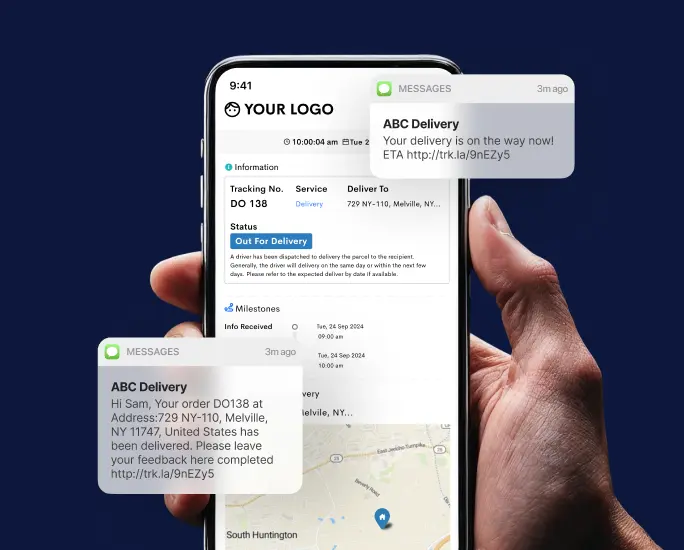What is a capacity plan? Capacity planning is a key process in many organizations to stay productive and cost-effective.
It involves understanding current resources, forecasting future needs, analyzing workloads and finding ways to optimize the use of existing systems—all while staying one step ahead of any potential risks.
Understanding capacity planning can be complex for beginners who are unfamiliar with processes, but it’s an essential action for companies that rely on technology.
This guide will provide an introduction to capacity planning so you can learn how this simple yet sophisticated approach helps create efficient business operations.
What Is Capacity Planning?
Capacity planning is proactively and systematically planning for future infrastructure needs. It is a process that helps organizations maintain the optimal balance between their business needs and resources.
Capacity planning involves understanding an organization’s technology, capacity requirements, budget constraints and other demands to plan for capacity needs in the future. This process helps organizations identify potential problems and create strategies to address them before they occur.
Capacity planning is a critical component of any organization’s strategy, as it requires understanding current and future needs to keep the delivery business running efficiently.
It also promotes cost-efficiency, allowing companies to allocate their resources better when preparing for the future. Capacity planning also provides the opportunity to identify areas of improvement and anticipate challenges to remain competitive.
By forecasting capacity needs and incorporating them into your plans, you can ensure that your organization is always prepared for whatever comes its way.
With strategic capacity planning, businesses can plan for future growth, manage resources more effectively and stay ahead of their competition.
How Is Capacity Planning Different From Resource Planning?
Capacity planning is different from resource planning in several ways. While both processes involve the management of resources and allocation of those resources to meet needs, capacity planning involves forecasting for the future.
It requires an understanding of current and future business requirements, budget constraints, and any other factors that might impact capacity needs.
The goal of capacity planning is to ensure that an organization is in the best possible position to accommodate growth and changing demands.
Resource planning, on the other hand, involves allocating existing resources for current tasks but does not necessarily involve forecasting for future needs. This process ensures that resources are being used effectively to meet current objectives.
While both processes are important for any business, capacity planning provides a more comprehensive strategy for understanding and preparing for future needs.
Why Is Capacity Planning Important For Businesses?
Capacity planning is an important part of business management as it helps to ensure that businesses are well-prepared for any fluctuations in demand. It also helps businesses allocate resources efficiently, so they can maximize profits while minimizing costs.
With it, businesses can anticipate future needs and plan accordingly. Proper capacity planning allows businesses to identify potential bottlenecks, so they can take steps to improve processes or outsource certain services if necessary.
It also helps businesses allocate resources more effectively and make sure that the right amount of resources is available when needed. Additionally, it allows businesses to be better prepared for unexpected situations and changes in customer demand.
By understanding their capacity needs in advance, businesses can make sure that they are always well-equipped to handle any unexpected changes. Ultimately, capacity planning is essential for businesses as it helps them remain competitive and efficient.
By properly planning their capacity needs, businesses can ensure that they have the resources necessary to meet customer demands and stay ahead of their competitors.
What Are Some Common Methods For Capacity Planning?
Lead Strategy
Lead strategy is a common method for capacity planning. It involves assessing the current and future demand for resources, setting goals for meeting those demands, and outlining plans to meet those goals.
The idea behind the lead strategy is to anticipate or predict future needs in order to plan ahead for them. This helps businesses ensure they have enough resources available when needed.
This also helps to create a more efficient and cost-effective system, as businesses can avoid wasting resources due to an unexpected influx of customers or services that are in high demand.
Match Strategy
Match strategy is a method used when there is a balance between the supply and demand of resources. This method involves developing plans to maintain the balance between customers’ demands and the company’s resources.
Match Strategy includes monitoring customer demands, evaluating current resources, and making necessary adjustments to ensure that all needs are met without over- or under-allocating resources.
This method helps businesses maintain a level of efficiency and cost-effectiveness, as it prevents them from wasting resources due to over- or under-allocation.
Lag Strategy
Lag strategy is another method. It is used when the demand for a product or service has already been established but there is not enough capacity to meet those demands. In this case, the business must adjust its capacity in order to meet the increase in demand.
A company’s lag strategy should include assessing current and future needs, researching ways to improve existing processes and systems, and determining what resources are needed to ensure that all customer demands are met in a timely manner.
This strategy is often used when businesses experience a large influx of customers or services that require additional resources.
Common Challenges In Capacity Planning
Accurate forecasting
One common obstacle in capacity planning is accurate forecasting. Without the proper predictive analysis, businesses may not be able to foresee what their eventual needs will be and therefore make inadequate accommodations.
This can leave companies feeling overwhelmed as demand surges and strains resources unnecessarily.
To avoid this situation, having strong forecasting methods in place is necessary so companies can properly prepare for spikes in demand and ensure that their operational capabilities have sufficient room to grow.
Rapid technological changes
Another common challenge in capacity planning lies in rapidly changing technologies, which can require businesses to keep up with new developments in order to remain competitive.
As a result, businesses have had to become accustomed to constantly adjusting their processes and procedures to keep up with changes, leading them to adopt lean principles such as eliminating waste and minimizing disruption.
Although this makes it more complex, it also presents an opportunity for companies to stay at the cutting edge of their industry by utilizing the newest technologies first.
Limited resources
One of the biggest issues companies face when it comes to capacity planning is working within limited resources.
Whether it be a lack of finances, an undersized staff, insufficient materials, or a combination thereof, these limitations can be frustrating beyond measure for those tasked with creating and executing successful plans.
Unfortunately, it may seem that some leaders only become aware at the last minute of the constraints on their team’s abilities to reach desired goals; however, by identifying limitations early on and adjusting plans accordingly, meaningful progress can still be made.
Ultimately, while resources remain limited they don’t have to limit progress.
How Can Businesses Use Capacity Planning To Optimize Their Operations And Reduce Costs?
Capacity planning is a powerful tool for businesses to increase efficiency and reduce overhead. It involves forecasting the demand of resources and goods, as well as predicting the capabilities of their labor force ahead of time.
With it, businesses can better anticipate the needs of customers while improving utilization of personnel, equipment and other materials.
By proactively mitigating any potential bottlenecks in production or service provision, companies can customize their operations to minimize expenses related to staffing levels, inventory space and capital investments.
Moreover, when organizations have greater insight into their operations and resources, they have more chances to create agile processes that readily adjust to ever-changing markets or customer needs.
Through careful implementation of capacity planning strategies, businesses can drive success without having to stretch tight budgets.
How Does Capacity Planning Relate To Delivery Management?
Capacity planning plays a critical role in delivery management when it comes to anticipating, meeting and exceeding customer demand.
In order to efficiently assess the resources needed for an organization to reach its goals, capacity planning involves an analysis of expected personnel, technological and manufacturing capabilities over a particular period of time.
This can provide organizations with insight as to how long projects should take based on their capacity before committing to completing any project for the logistics process.
In addition to providing useful metrics for gauging completion timeframes, capacity planning also ensures that the necessary teams are working together successfully, streamlining operations for reliable performance throughout.
By focusing on efficient capacity planning, organizations can optimize their delivery processes and provide customers with quality products and services in the most efficient manner possible.
Capacity Planning Best Practices
Focus on overall supply chain visibility
Developing a successful capacity planning strategy relies on having a strong understanding of your entire supply chain. Without visibility across all lines, it’s virtually impossible to make proper decisions that address supply chain performance goals.
To give yourself the best chance of success, make sure you constantly monitor the current level of capacity within the supply chain and strive for improved visibility by evaluating each individual stage of the chain.
Doing this will allow you to stay ahead of unexpected demand and plan appropriately so that customers receive their orders on time.
Get clear on your current capacity limit
To ensure that you plan effectively and make the most out of your resources you should always start with understanding your current capacity limit.
This means accurately gauging how much output your system can handle, what tasks take precedence, and which outputs need to be cycled in and out the quickest.
Drawing on this information then allows you to properly manage projects and anticipate demand by understanding what is realistic for your current capacity limit.
Taking this approach helps ensure success long into the future and can pay dividends in returns further down the line.
Make sure your capacity aligns with the demand
When it comes to capacity planning, making sure that your capacity can meet the demand of customers or services should be the top priority.
Properly managing resources and organizing operations accordingly to account for sudden increases or decreases in demand is essential to success. Of course, careful consideration should be taken into account when estimating future needs as well.
Ultimately, aligning your capacity with future demands helps lead to improved customer satisfaction, cost reduction, improved performance and better resource management.
Implement the right software to help you streamline the process
The right software can streamline the capacity planning process and help ensure businesses stay on top of their capacity usage.
Implementing a specialized software program can help provide current and accurate data that can identify potential areas of optimization, allowing businesses to have greater awareness of their capacity utilization over time and make informed decisions regarding resource allocation.
Taking the time to choose the best software for your business needs will pay off in increased efficiency and productivity.
Level Up Your Capacity Planning Process
Capacity planning is a process for ensuring that an organization has the resources it needs to meet future demands.
By understanding projected demand and making sure there are enough resources available to meet that demand, organizations can avoid disruptions in service or overspending on unnecessary resources.
If you’re new to capacity planning, this guide should give you a solid understanding of the basics. Once you have a handle on the basics, you can start incorporating capacity planning into your own organization’s operations.













